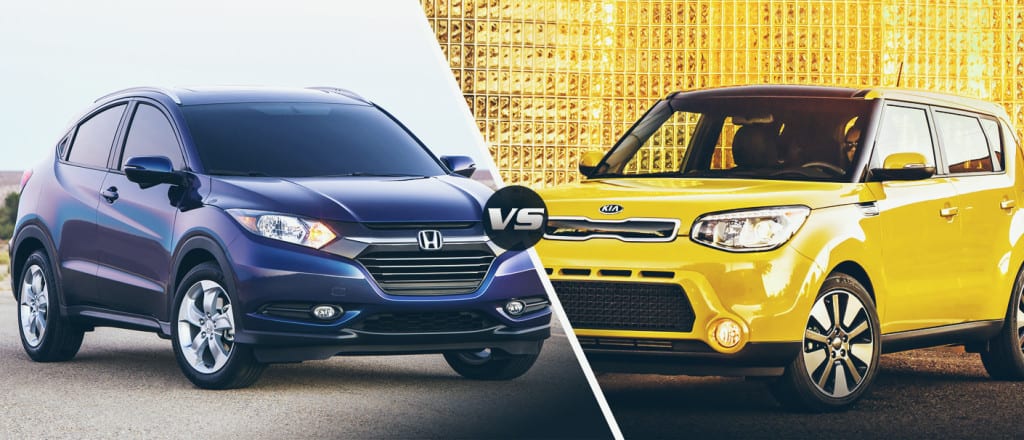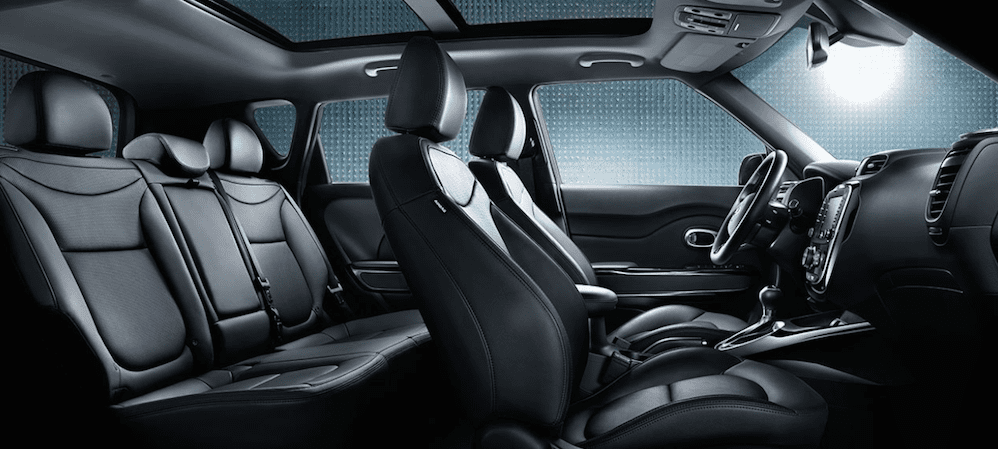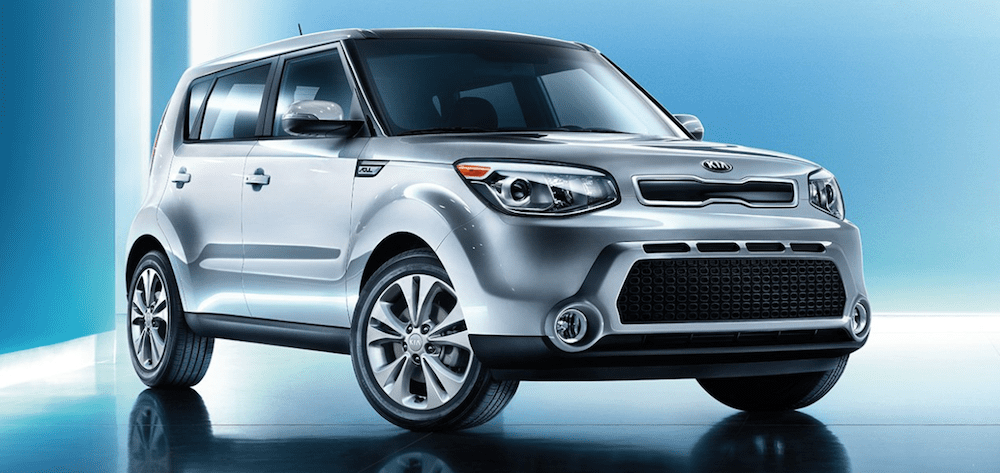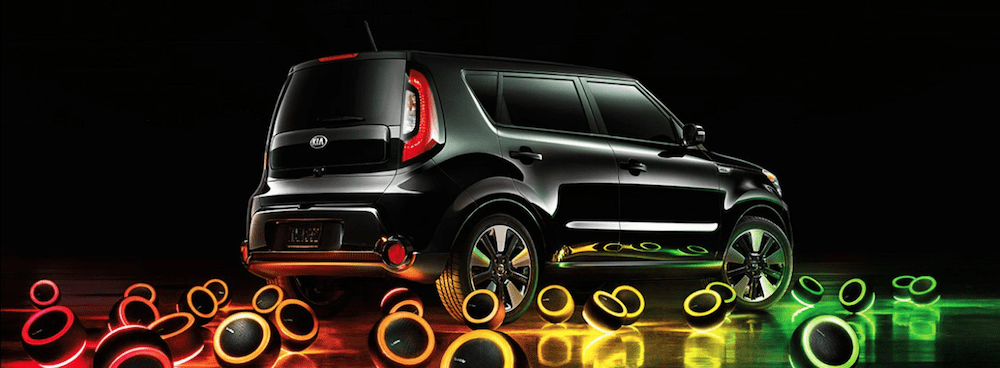The term “crossover” gets tossed around a lot these days, and it can be hard to know what actually counts as a crossover and what doesn’t. Generally, this term refers to vehicles that look to combine the style and efficiency of a sedan with the power of an SUV in a carefully-crafted combination of form and function.
This year, two of the most impressive crossover model to hit dealerships have been the 2016 Kia Soul and the 2016 Honda HR-V. These comparable models both deliver fully on the crossover idea, and so we thought we’d compare the two to see how they stack up. Here’s our head-to-head comparison of these two impressive crossover models.
Interior Comfort
The 206 Kia Soul promises living-room level comfort for driver and passenger alike with luxurious soft-touch material available throughout, alongside tailored headrests and available audio-responsive LED mood lighting to help set a calm and peaceful mood in the cabin – perfect for those stressful days when some time on the road is the perfect remedy to clear your head.
Many of the Soul’s most impressive features are either optional or unavailable on its basic trim level, but many come standard on its two higher + (Plus) and ! (Exclaim) trim levels. These include premium amenities like the 4.3-inch color touch-screen audio display, cruise control, remote keyless entry with push-button start, leather seats, and a heated steering wheel – among many others.
Or, if you so choose, you can bump your tunes through the Soul’s standard six-speaker AM/FM/MP3/SiruisXM satellite radio player and the nifty LED mood lighting will respond with warmer, brighter colors. Open up the available power sunroof and let in that natural light to complete the mood – a fun drive in a fun car.
For those looking to get all of the premium interior amenities at a fair price, the Kia Soul is a safe option.
The Honda HR-V crossover also features many similar options, with some – like cruise control and power windows – standard on all three trim models. Other amenities, like push button start and a leather-wrapped steering wheel, are similarly reserved for the higher trim models, while surprisingly SiriusXM radio is available on only the highest EX-L Navi trim. The HR-V also features only a 4-speaker audio system on its base model and a 6-speaker setup available only on its higher trim levels, as opposed to the Soul’s standard 6 speakers.
Both models feature similar cargo arrangements, with 60/40 folding front seats standard on every trim for both models and each offering some impressive available total cargo space: the Kia Soul beat out the Honda HR-V by a few inches, ringing up 61.3 cubic feet of cargo space over the HR-V’s 58.8 cubic feet.
Tech-wise, the HR-V seems to slightly beat out the Soul because of its impressive standard features, including a standard 5-inch color LCD touchscreen infotainment system in its base model and an available 7-inch high-resolution screen in the higher trim levels.
The Soul, on the other hand, offers only a 4.3-inch touchscreen available optionally in its base trim level or standard in its higher trim levels, with an 8-inch display only optional in the higher trim levels. This is a bigger screen, but doesn’t come standard like the higher-level HR-V’s touchscreen. In the Soul, however, this system comes standard with voice recognition and navigation, while these are only further additional options for the HR-V. And while the Soul can connect with an MP3 player via USB, the higher trim levels on the HR-V include a dual-audio interface for USB.
The Difference Is On The Outside
In this case, given their generally similar interior amenities, it might be best to judge a book by its cover.
In this case, we’re confronted with two notably differing design styles, from the boxy, utilitarian look of the Kia Soul to the sleek, aerodynamic form of the HR-V. Each offers a different attitude and different benefits in terms of style and ability.
Despite its noticeably sharp corners and defined edges, the Kia Soul offers a surprising amount of grace to the boxy-type design. With brilliant, crisp High-Intensity Discharge (HID) headlights clearly illuminate the road ahead in almost any condition, while the sharp LED taillights promise that your Soul will look just as good pulling away as it did driving up in the first place.
The Honda HR-V, however, follows more closely to the Honda-style design cues of sleek aerodynamic shape and a long cabin. Boasting a smooth, muscular design on the trim and exterior amenities from roof rails to heated mirrors, this crossover Honda offers plenty of premium attitude for you to express your style. Daytime running lights help increase your visibility to other drivers on the road, and LED brake light offer sharp definition to help prevent night time collisions.
Comparing What’s Under The Hood
The beauty – and kind of the whole point – of a crossover is that it features a careful balance of the efficiency and style of a sedan with the power of an SUV. This is definitely true of both of these models, with each bringing an impressive amount of power and performance to complement their sleek, stylish designs.
The Kia Soul is an undeniably capable machine, boasting a standard 1.6L four-cylinder engine capable of a respectable 130 horsepower and 118 lb-ft of torque for a combined fuel efficiency of 26 miles per gallon, spread between 24 mpg city and 30 mpg highway. This comes with a standard six-speed manual transmission on the base trim level or an optional automatic six-speed that’s standard on the higher two trim levels.
For Kia lovers looking for even more impressive motoring power, the Soul offers an upgraded 2.0L four-cylinder, which boosts horsepower to 164 hp and torque up to 151 lb-ft. This engine option also slightly increases highway fuel economy to 31 mpg, thereby boosting the combined average to 27 mpg.
The Honda HR-V features a similarly impressive powertrain system, also boasting a powerful 4-cylinder engine capable of an impressive 141 horsepower and 127 lb-ft of torque available standard across the trim levels.
Where the HR-V trims differ, however, is in their transmissions: for the lower two levels, a six-speed manual offers 25 mpg city and 34 mpg highway for a combined economy of 28 mpg; a continuously variable automatic transmission for the higher two trim levels offers 27mpg city/32mpg highway/29mpg combined, while the two-wheel drive option boosts that to 28mpg city/35mpg highway/31 mpg combined. These all beat out the options available on the Soul, albeit on a higher price tag.
Safety-wise, these models are nearly identical, with every trim level offering premium safety features from trailer stability control to child tethers standard. A full airbag system and three-point seatbelts in each, while antilock brakes and hill-start assist come standard in both models to improve stability and reliability on the road.
For What It’s Worth, Get The Soul
Given the overwhelming similarities between these two models, it’s unlikely that anyone but a super experienced and finicky driver would really notice much difference. Each tends to differ most in exterior style, but remain similar in capabilities and interior amenities.
That’s why, simply for the price difference, we recommend the Kia Soul. At an MSRP starting at $15,690, you’ll get roughly the same driving experience for your money’s worth over the $19,115 Honda HR-V base model. Especially for those looking for the full crossover experience without the filled-out pice tag, the Soul might just be the perfect vehicle for you.










